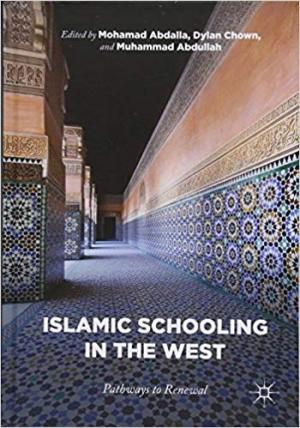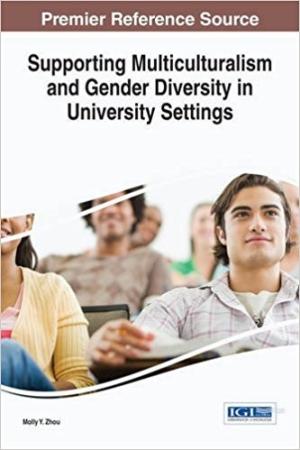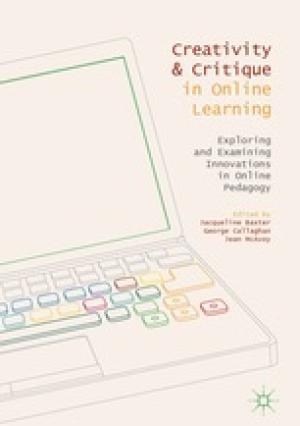Resources by Saortua Marbun

East and West have long struggled to coexist without detriment to cultural and religious beliefs. With growing globalization and immigration the issue of tolerance and acceptance of different viewpoints is of urgent importance and value. Books on this highly challenging and relevant issue attract the attention of a wide audience. Islamic Schooling in the West is clearly such a book. The authors of the book live and work in Australia. Specifically, Mohamad Abdalla founded three Islamic studies centers at Australian universities, Dylan Chown is a well-known researcher of Islamic pedagogy in the Australian educational environment, and Muhammad Abdullah has 25 years of teaching experience in Australian state schools. This does not mean the book is designed specifically for the Australian community; the book’s ideas and suggestions can be applied to Islamic schools in the West, provided the schools are open to renewal and improvement. Islamic Schooling in the West is a collection of work by contemporary educators and scholars who wish to both keep Islamic schools consistent with traditional Islamic philosophy and make them relevant and highly sought after. The desire to preserve traditional knowledge (2) within the Islamic paradigm and the need to be welcomed and accepted in Western society resulted in this practical manual on how to use modern teaching practice for the benefit of Islamic schools in the West. While some of the book’s chapters focus on specific educational experiences in Australia (for example, “Muslim Schools in Australia: Development and Transition” by Jan A. Ali and “The Importance of Islamic Studies from an Islamic Worldview in Australia” by Ibrahima Diallo), the majority of chapters can be applied to any Islamic school in a Western community. For example, the chapter “Islamic Pedagogy: Potential and Perspective” by Nadeem A. Memon and Mariam Alhashmi aims to challenge a common stereotype that Islamic education is about teaching religion only (169). Thus this book can be used in any Islamic school in the West – not just in Australia. In general, Islamic Schooling in the West is a book designed to promote the renewal of Islamic education in the Western community. In the twenty-first century, it is necessary to not only keep the traditions and pass down centuries-old knowledge but also to take advantage of updated educational practice and use contemporary teaching and learning techniques to overcome the difficulties Islamic schools face in the West. This book will be interesting for both scholars and teachers.

Globalization directly affects all spheres of human activity. Higher education is no exception. Teachers are encouraged to engage emerging technologies and devices in the practice of their teaching with the hope of advancing student learning. The popularity of distance learning is one example of globalization’s reach. Anyone with an Internet connection can pursue higher education. Boundaries and barriers to education are easily crossed through Internet technology. Cooperation across international higher educational boundaries fosters new cooperation among faculty and raises questions about what connotes learning in diverse cultural contexts. Supporting Multiculturalism in Open and Distance Learning Spaces by Elif Toprak and Evrim Genc Kumtepe provides a detailed overview of contemporary cultural issues and complexities in distance education. The book helps teachers, researchers, scholars, and policymakers approach global education from a variety of cultural perspectives. The book is divided into three sections. Section 1, “Cultural Issues in Management and Global Distance Education,” describes the practical experience the authors gained when working in open or distance education environments. For example, this section covers such topics as the influence of gender on educational policies, the role of quality assurance, and the relationship between cultural perspectives and efficient distance learning. Section 2, “Cultural Issues in Theory and Technology,” looks at close cooperation between education, culture, and technology, starting from the rise of the modern digital era to contemporary contexts. It emphasizes how important it is for the educators to “effectively internalize the premodern, modern, and postmodern eras” (1) or risk either losing a necessary contact with their students or misjudging their conduct and aspirations. The important role of virtual culture and culturally-sensitive instructional design principles is foregrounded in Section 3, “Cultural Issues in Instructional Design and Communication.” For example, “Culturally Sensitive Instructional Design Principles for Online Learning Environments,” explores different components of culture in the learning space, analyzes Hofstede’s Theory of Cultural Dimensions, and evaluates other cultural frameworks and their application in distance learning. Supporting Multiculturalism in Open and Distance Learning Spaces is organized to share experiences and find efficient ways to nurture multiculturalism in learning environments. The book will interest both practitioners and scholars as it contains useful information on theoretical approaches to open and distance learning spaces, analysis of relevant studies, and practical advice on how to utilize various aspects of global education. The three sections with their specific foci enable readers to quickly surf the book without having to read every chapter. Each section contains a detailed reference list of literature, which is also an essential benefit of the book.

The growth of online education prompts a need for qualitative research about student learning outcomes and teaching methodologies. It also requires the production of specific educational material that is consonant with this educational medium. In addition, practical advice for online educational methods is warranted. This book is a collection of articles that address a range of concerns within online education. The authors do a good job in the critical assessment of the current possibilities that online education provides. It also invites readers to engage in complex discussions about online education in the future. Creativity and Critique in Online Learning is divided into two parts. The first part is concerned with teaching practices. In particular, it examines available online teaching instruments and places online education in a broader context. This section of the book contributes a detailed analysis of online forums, discusses ways to make online teams work effectively, and explores how popular social networks, such as Facebook, contribute to informal learning. It also discusses what role multisensory learning has in online space, how to use all the senses in online education, as well as how to nurture creativity and critical assessment. This section is of interest to teachers and students alike because it looks at practical aspects of online education and gives useful advice on how to use them productively. The second part of the book focuses on particular online teaching challenges and how to effectively engage them. Online academic cheating, its growth, and various ways to fight this phenomenon are addressed. In addition, it provides help for how to build successful relationships, instill values, and cherish identity in the online teaching community. This section also takes a closer look at massive open online courses and their drawbacks, both explicit and implicit. One of the most interesting articles in this part is “The Move to Online Teaching: A Head of Department’s Perspective” by Diane Preston. This chapter invites readers to examine online education through the eyes of an experienced educator who is concerned about both the teaching process and institutional concerns. Overall, Creativity and Critique in Online Learning is recommended for a broad audience of educators. It contains useful information for teachers who are currently involved in online teaching, scholars, and policymakers in online education, as well as teachers practicing a traditional form of education and looking for interesting and innovative ways to make their subjects more appealing to contemporary students. One of the main pros of this book is that it does not try to present online education as a modern teaching panacea or the only choice for education in the future. On the contrary, the book presents online teaching in an unbiased manner. While it certainly praises the advantages and possibilities online education has for all participants of the teaching process, it also reveals existing flaws and addresses specific dangers of online education.